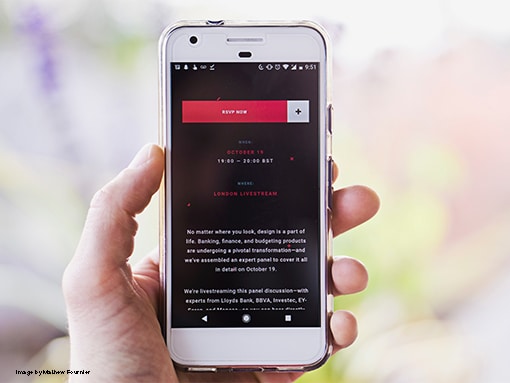What is Digital Marketing?
A voyage into the unknown?
What Is Digital Marketing?
What is digital marketing? Does it replace conventional or classic marketing efforts? The internet has not only opened up a new business model by allowing marketers to use any form of digital media to market their product or service, it also has opened up the (digital) marketing landscape to anyone who is handy with digital media, thus cutting out a lot of middle men and women.
Digital marketing in effect is the, marketing of products or services using digital channels to reach consumers. according to the Financial Times in this article. The key objective here is to promote brands through various forms of digital media.
Digital marketing extends beyond internet marketing to include channels that do not require the use of the internet according to the FT. What they are eluding to is that you can print brochures using digital camera, print on a digital printer and alike, or use a phone to take a digital picture of your product and publish it digitally online.
For simplicity’s sake I see Digital marketing as the web of strings that make up the (spider web) of the internet, comprised of web-sites and landing pages. Although classic marketing like brochures and junk-mail isn’t dead, it is so costly compared to online marketing that it has taken a back seat. Any good marketer, in my opinion, ties even classic marketing materials like business cards, brochures and leaflets to an online presence, whether website or landing page. People buy more and more online, so that’s where you want to capture them.
Digital marketing as a whole is the sum of many sub categories like web-design, content marketing SEO, SEM, email marketing, social media marketing and e-commerce, just to mention a few. This list is by no means complete, but it gives you an idea what digital marketing is.
Web Design
In this first section answering “What is digital marketing” we tackle Web Design, which in my opinion is as much part of Digital Marketing as Marketing activity like advertising. ,The answer to the question “what is web-design” covers many sins. According to Network Solutions web design is a process of conceptualizing, planning and building a collection of electronic files that determine the layout, colors, text styles, structure, graphics, images, and use of interactive features that deliver pages to your site visitors.
Although they are absolutely right from a technical standpoint, it doesn’t describe the business side of web-design, nor the more romantic emotional design of a web site or landing page. To put it bluntly, anyone with a technical skill can put a web site together as a collection of files etc. But not many can create a web-site that conveys the business Vision, Mission and Brand in a way that emotionally connects with the consumer, whether end-consumer or B2B customer or client.

You don’t believe me or understand my point of view? Just think Ferrari…! Many people in the auto industry can design and put a sports car together, however there are few, even Lamborghini that have an aura and a brand identity like Ferrari. Sometimes it is simply elusive, and you have no idea why something works or why it does not work.
It is a bit like fashion, which is also very difficult to predict. And finally, “beauty is in the eye of the beholder”…..what you think is beautiful, someone else may not. Thus even if you tick all the boxes of web design, in the end, your customers will be the judge and jury and will let you know in terms of traffic and/or sales whether your web design is successful.
But as always, you can’t go wrong if you use the KISS principle. “Keep It Simple, Stupid”. People can only absorb so much information and as always “a picture speaks a thousand words”, if you keep it simple people will stay on your site and actually start to absorb what you are about and what you sell, and maybe even come back to re-order.
If you want to learn more about the basics of web design, ThoughtCo. has a good article about it, just click here. In our next section of “What is Digital Marketing” we’ll discuss SEO or Search Engine Optimization.

SEO – Search Engine Optimization
The next part of “What is Digital Marketing talks to one of the most important and fundamental techniques in Digital Marketing, namely SEO or Search Engine Optimization.
The basic premises of SEO is the fact that you want to be seen online when you build a website. To accomplish that however, you must to be found first. That’s where SEO comes in; if you do it vigorously and consistently you have build your foundation, like one for a “cathedral”, of digital marketing.
SEO comprises of a long list of steps to take, starting with the URL of any site or page you create. The optimum would be to have the same URL as the keyword you are trying to optimize the page for. Subsequently you go down the hierarchy of page dynamics for SEO, like the Title of the page, the first header called H1, the next headers H2-H6, the paragraphs, the pictures….they should all contain the keyword or key phrase you try to optimize the page for.
The core principal of SEO is based on optimizing for a keyword or key phrase that could be used by potential customers when the search using search engines like Google and Bing. The more your page is optimized for say the keyword “Tappas” the bigger the chance that you show up high in the SERP, or Search Engine Results Page of Google or Bing. There is a snag however, your competition may create optimized pages for the same keyword or key-phrase. That’s why ypou should try to use keywords or phrases with low competition. You can find those by using tools like SEO Profiler, SEM Rush or MOZ.
If you want to be higher ranked than the competition you’ll have to work on other SEO factors like Title tag, Meta Description, Internal Links, External Links, Image Name and Alt Tags, and Bold Text. You can learn about SEO in more detail in this article by Medium.com. It describes in detail the steps to research and implement for SEO.
In our next section of What is Digital Marketing we’ll discuss SEM or Search Engine Marketing, and Content Marketing.
SEM and Content Marketing
Now that the foundation for What is Digital marketing has been explained, we move on to SEM, or Search Engine Marketing and Content Marketing. In both cases we are talking about paid advertising. The first is paid advertising when people search for a keyword using search engines like Google or Bing. The next is a form of advertising that shows up when you are reading an article about topic A or Product A, and the ad you see on the side is for Topic A or Product A.
Where SEO helps you rank higher in SERPs, Search Engine Results Pages through Organic means, when you participate in SEM you sign up for a service like Google Adwords and bid to have your page show up on the front page of a SERP when someone searches for keyword or phrase X.

As said it is paid advertising based on bidding against your competition, so this can get expensive. You have many choices to manage your advertising, but the key choices you make is which keyword.
The more generic your keyword, like food, the more competition you have, but if you outbid your competition, the more traffic you generate. The downside to this strategy is that if someone is looking for Italian Sausage and you offer bananas, the keyword food will bring you lots of traffic but also “Food” traffic that is not looking for bananas. Any paid traffic that is not looking for bananas could be a waste of money.
Content marketing is also based on the bidding principle, where you bid against the competition to have your ad show up next to any article online that has your chosen keyword in its content. Like with SEM you need to make sure you use the correct keyword and generate traffic from people that are actually interested in your product.
To learn more about SEM and Content Marketing, check out this article by MarketingMojo by clicking here.
In our next section of “What is Digital Marketing” we’ll discuss Social Media Marketing.

Social Media Marketing
The next section answering What is Digital Marketing discusses Social Media marketing. It refers to the process of gaining traffic or attention through social media sites” according to searchengineland.com. I agree but would like to add that social media marketing is both organic marketing through “likes” and “shares” as well as paid marketing through advertising.
Both paid and organic social media marketing can be very effective, however, paid social media marketing in the form of advertising can get very costly very quickly.
Organic social media marketing is driven by a combination of having online connections and creating such compelling, if you’re lucky even “viral” content, that your content gets picked up by your connections and gets “liked” and “shared”.
Particularly when people share your content and your article, message, image or video spreads like a virus or “oil spill” you have reached a key milestone.
If people click on a link in your article and end up on your website, you have created your first level conversion, i.e. getting traffic. The next level conversion, which is even more important is to get any visitors of your website or landing pages to make a purchase. That’s the ultimate conversion, next to a repeat purchase. Getting an ROI out of organic social media marketing depends on your content and message reaching the right target group however. Any wrong visitor to your website is significantly less valuable thus creating a lower ROI.
Paid social media marketing, where your paid “ads” are spread around the social media landscape by the platform you are advertising on, should also be aimed at the correct target group. If you aim your ad at a wide audience, you will also get clicks and traffic from people that may be curious but unlikely to convert to making a purchase. That advertising money is wasted. Platforms like Facebook nowadays offer great tools to narrow your focus tremendously to any target group of your choice.
In the old days when TV advertising was as wide as it got, Peter Drucker once said “50% of my advertising spend is wasted, if only I knew which 50%”! With social media platforms, this statement doesn’t hold anymore, you have the choice to narrow your target group largely in your own hands.
If you want to learn more about social media marketing please check out this article from Wordstream.com.
In our next section of What is Digital Marketing we’ll discuss Email Marketing.
Email Marketing
This section in What is Digital Marketing talks about Email marketing, a form of direct marketing that uses electronic mail as a means of communicating commercial or fundraising messages to an audience. In its broadest sense, every email sent to a potential or current customer could be considered email marketing says CrossXware in their blog post here.
Personally I would describe email marketing as “one part of digital marketing, where a person or business sends an email to a person or business marketing the product(s) and/or service(s) they offer”. I would add that part of email marketing is also any email that simply connects to a (potential) customer where you may be schmoozing or discussing any topic under the sun that builds your relationship with (potential) customer in question.

Important to know, and put yourself briefly in the shoes of the receiver of lots of promotional emails, is that email marketing is “push marketing”. Bluntly put, promotional emails are put in your face when you don’t expect them necessarily. Why is that important, well, you react to advertisements when you need something, or are interested in something.
Ads online that show up on the side, when you are reading an article about something, are (relatively) unobtrusive thus you are less agitated and actually may click on the ad. The ad “pulls you in”, hence “pull marketing.
But with email marketing, who doesn’t get overwhelmed with the daily stream of emails, including junk mail. So the likelihood that you click on the email and call it spam is significant. Emails are pushed into your face when more often than not you don’t want them. Hence “push marketing”.
That’s why you should use proper email campaign companies to send promotional emails, and only send a campaign to people who have already opted in to receiving emails from you. People mostly opt in when they sign up for your newsletter on your website for instance. If you try to move away from doing email campaigns the proper way, your email and server may become blacklisted, and then “you are further from home”. In other words it blocks any future email marketing effort to be successful.
To learn more about email marketing check out this article by CrossWare, by clicking here.
In our final section of “What is Digital Marketing” we’ll discuss E-Commerce. Digital Marketing is so much more than just the sections I discussed here, but these are the corner stones of “What is Digital Marketing”. We’ll go into more detail in later articles.

E-Commerce
Our final section for this article on What is Digital Marketing, gives you an overview of E-Commerce, or electronic commerce. E-commerce is the activity of buying and selling products and services online. This can be via the internet, or computer to computer, electronic device to electronic device or phone to phone. It does not have to be on a website, online on the internet, although most transactions somehow go through the internet.
As defined above you can sell any product you like online, as long as it is within the law. You can sell food, cars, suitcases, shoes, clothes, electronics and spare parts. Currently the biggest E-Tailer is Amazon.com. Amazon’s mission is to be the biggest E-Tailer on the globe. Lately they have made a first step into the Retailer market, the “brick and mortar” retail business when they bought Wholefoods. Their strategy is to combine E-commerce and all its technological advantages with brick and mortar retailing, creating an incredibly powerful distribution and communication (read “marketing”) channel to the consumer.
E-commerce historically has largely been buying and selling products, whether physical products or digital products you can download. More recently e-commerce of services has started to grow. Even “stuffy” institutions like banks and lawyers have come to see the incredible advantages of marketing their services online, and selling their services online. Even Amazon has started to dabble in marketing services.
Now how do you establish e-commerce, i.e. if you want to sell your product or service online how do you go about it? You can create your own website with e-commerce on easy platforms like Wix.com or Squarespace.com, where you can build a simple basic site by dragging and dropping sections to make the site look good. In addition you can add a store section (e-commerce) where you can set up your product or service details, a payment platform and a shipping platform.
If you want to go more custom you can create a site relatively quickly on the WordPress platform and an integrated store, i.e. e-commerce through Woocommerce. If you want to go even more custom, you can use platforms like Drupal or build a website all the way from scratch using a program like Adobe Dreamweaver.
More often than not, particularly if you only have 1-5 items to sell “drag and drop” platforms like SquareSpace or a full CMS, Content Management System platform like WordPress are advised. Building a customized website can become very quickly overwhelmingly complicated to build, read “costly”, and to maintain. Before you make a choice do your homework on what exactly do you want to do, and secondly what platform would best accomplish that objective.
To learn more about E-Commerce checkout this article from TheBalance.com.
GET IN TOUCH
White papers, blogs and “how to” articles are great to refer to, but they’re just one dimensional. They won’t critique your strategic plan, operational issues, web design or digital marketing plans. You may need a sounding board, one that gives you honest, constructive and actionable feedback, not a Top 10 List of what to do.
